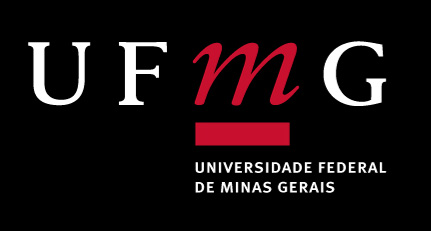Secondary contact recreational activities in urban lakes
case of Lake Pampulha
DOI:
https://doi.org/10.35699/2237-549X.2019.19887Keywords:
Secondary contact recreation, Urban waters management, Lake PampulhaAbstract
Despite its historical and cultural importance, the Pampulha modern ensemble, a World Cultural Heritage Site by UNESCO, has been suffering the negative impacts of an unplanned urbanization process over water quality, impairing its use for recreational purposes. In view of the demand for the recreational use of the waters of Lake Pampulha and the investments made in the last decades to recover this urban lake, this work aims to evaluate its water quality for secondary contact recreation in order to verify the impacts of the pollution remediation programs adopted. Despite the disclosure of favourable conditions by public authorities, the results of the monitoring of waters between 2012 and 2018 demonstrate that only the PV235 and PV240 monitoring sites were in compliance with the official standards at specific periods. However, these conditions are influenced by seasonal factors, dilution, and microbial decay, leading to unsuitable conditions during the monitoring period. PV230 was systematically unsuitable. Other risk factors associated with intense algal blooms, presence of S. mansoni in transmitting organisms, records of cases of Brazilian spotted fever, and unknown alligator population, are factors that may affect wading and fishing activities.
Downloads
References
BEATO, D.A.C. et al. Impactos urbanos em águas subterrâneas bacia da lagoa da Pampulha, Belo Horizonte-MG. Rev. Águas Subterrâneas, v.17, n.1, p.49-68, 2003.
BELO HORIZONTE. Lei 1523 de 4 de setembro de 1968. Legislação do Portal da Prefeitura de Belo Horizonte. Dispõe sobre o uso da represa da Pampulha. Recuperado em 24/07/2019 em: https://www.cmbh.mg.gov.br/atividade-legislativa/pesquisar-legislacao/lei/1523/1968.
BOERI, M. et al. Site Choices in Recreational Demand: A Matter of Utility Maximization or Regret Minimization? Journal of Environmental Economics and Policy, v.1, n.1, p. 32–47, 2012.
BROOKES, J. D. et al. Fate and transport of pathogens in lakes and reservoirs. Environment International, v.30, n.5, p. 741-759, 2004.
BURATTI, F.M. et al. Cyanotoxins: Producing organisms, occurrence, toxicity, mechanism of action and human health toxicological risk evaluation. Arch. Toxicol, v.91, n.3, p. 1049–1130, 2017.
CARMICHAEL, W. W. Human fatalities from cyanobacteria: chemical and biological evidence for cyanotoxins. Environmental Health Perspectives, v.109, n.7, p. 663-668, 2001.
CARSALADE, F. Pampulha. Coleção BH. A cidade de cada um. Belo Horizonte: Conceito, 2007.
CHORUS, I.; BARTRAM, J. Toxic cyanobacteria in water: a guide to their public health consequences, monitoring e management. London: WHO, 1999.
DAVIES-COLLEY, R.; VALOIS, A.; MILNE, J. Faecal contamination and visual clarity in New Zealand rivers: correlation of key variables affecting swimming suitability. Journal of Water and Health, v.16, n.3, p.329-339, 2018.
DEFLORIO-BARKER, S. et al. Estimated costs of sporadic gastrointestinal illness associated with surface water recreation: a combined analysis of data from NEEAR and CHEERS studies. Environ Health Perspect, n.125, v.2, p. 215-222, 2016a.
DEFLORIO-BARKER, S. et al. Water recreation and illness severity. Journal of Water and Health, v.14, n.5, p. 713–26, 2016b.
DEFLORIO-BARKER, S. Estimate of incidence and cost of recreational waterborne illness on United States surface waters. Environmental Health, v.17, n.3, p. 1-10, 2018.
DODDS, W. K. et al. Eutrophication of US freshwaters: analysis of potential economic damages. Environmental Science & Technology, v.43, n.1, p. 12-19, 2008.
DOREVITCH, S. et al. Water ingestion during water recreation. Water Research, v.45, n.5, p. 2020-2028, 2011.
DOREVITCH, S. et al. Health risks of limited-contact water recreation. Environ. Health Perspect, v.120, n.2, 192-197, 2012.
DOREVITCH, S. et al. Water quality as a predictor of gastrointestinal illness following incidental contact water recreation. Water Research, v. 83, p. 94-103, 2015.
DORNAS, J.P. Esportes e atividades realizadas na era de ouro da Lagoa da Pampulha. Ouro Preto em Foco. Ano VI, v.46, p. 6-9, 2015.
FEWTRELL, L. et al. Health effects of white-water canoeing. Lancet, v.339, n.8809, p. 1587-1589, 1992.
FIGUEREDO, C. C. et al. From intermittent to persistent cyanobacterial blooms: identifying the main drivers in an urban tropical reservoir. Journal of Limnology, v.75, n.3, p. 445-454, 2016.
FRIESE, K. et al. Anthropogenic influence on the degradation of an urban lake - the Pampulha reservoir in Belo Horizonte, Minas Gerais, Brazil. Limnologica, v.40, n.2, p. 114-125, 2010.
GEOSYNTEC. Dry and Wet Weather Risk Assessment of Human Health Impacts of Disinfection vs. no Disinfection of the Chicago Area Waterways System (CWS), In: Chicago M.W.R.D.O.G. (ed.), Geosyntec Consultants, Chicago, IL, 2008.
HELSEL, D.R.; HIRSCH, R. M. Statistical Methods in Water Resources Techniques of Water Resources Investigations, Book 4, chapter A3. U.S. Geological Survey, 2002.
HESPANHOL, I. Um novo paradigma para a gestão de recursos hídricos. Estudos Avançados, v.22, n.63, p.131-158, 2008.
INSTITUTO MINEIRO DE GESTÃO DAS ÁGUAS - IGAM. Avaliação da qualidade das águas da Bacia da Lagoa da Pampulha: relatório / Instituto Mineiro de Gestão das Águas. Belo Horizonte: Instituto Mineiro de Gestão das Águas, 2013.
ITATIAIA. Prefeitura acredita que Lagoa da Pampulha vai ficar apta a receber esportes náuticos em abril. Itatiaia, Belo Horizonte, 18/01/2019. Disponível em: http://www.itatiaia.com.br/noticia/prefeitura-acredita-que-lagoa-da-pampulha-vai.
JUNQUEIRA, D.L.M. Análise do discurso do setor público a respeito do espaço público de lazer da orla do lago Paranoá de Brasília/DF. Licere, v.21, n.1, p. 174-193, 2018.
KUBISTCHEK, M.; LAGOA, T. Kalil diz ser 'lorota' falar em praticar esportes náuticos na lagoa da Pampulha. Jornal O Tempo, Belo Horizonte, 05/09/2018. Disponível em: https://www.otempo.com.br/cidades/kalil-diz-ser-lorota-falar-em-praticar-esportes-n%C3%A1uticos-na-lagoa-da-pampulha-1.2026984.
LABRUNA, M.B. et al. Isolation of Rickettsia rickettsii from the tick Amblyomma sculptum from a Brazilian spotted fever-endemic area in the Pampulha Lake region, southeastern Brazil. Veterinary Parasitology: Regional Studies and Reports, v.8, p. 82–85, 2017.
LAMPARELLI, C.C. et al. Are fecal indicator bacteria appropriate measures of recreational water risks in the tropics: A cohort study of beach goers in Brazil? Water Research, v.87, n.2015, p. 59-68, 2015.
LEMOS, M. Histórias: Lagoa da Pampulha. 24/07/2017. Disponível em: https://mairalemos.com/historia/2017/7/24/ttulo-do-post-z8ywg-ayfxs-ermkr-dsn5d-248ge-2fb79-xekxa-djpw6-by736-mrmfl-b7typ-7khdg-7d99f-686xd-hbmem-4p723-b3h2e-6cjg8-ma63e-2w4bz-n6hek-hrs7l-5nbws-nkdw4-r8mf4-dlnhg-tm24j-87td5-hsg6h-ngwwk-4exg4-57hcn-75jyz-r52da-ebg8g-gpmst?rq=Pampulha.
LOPES, F.W.A. et al. A water quality index for Brazilian freshwaters. Journal of Water and Health, v.14, n.2, p. 243-254, 2016. DOI: https://doi.org/10.2166/wh.2015.117
LOPES, F. A. et al. Challenges for contact recreation in a tropical urban lake: Assessment by a water quality index. Environment, Development and Sustainability, 2019. DOI: https://doi.org/10.1007/s10668-019-00430-4
LOPES, F.W.A.; MAGALHÃES JR, A.P. Avaliação da qualidade das águas para recreação de contato primário na bacia do Alto Rio das Velhas - MG. Hygeia: Revista Brasileira de Geografia Médica e da Saúde, v.6, n.11, p. 133-150, 2010.
LOPES, F.W.A.; MAGALHAES JR, A.P.; VON SPERLING, E. (2013). Balneabilidade em águas doces no Brasil: Riscos à saúde, limitações metodológicas e operacionais. Hygeia: Revista Brasileira de Geografia Médica e da Saúde, v.9, n.16, p. 28-47, 2013.
LOPES, F. A.; OLIVEIRA, C.K.R. (2017). Protocolo para avaliação da qualidade sanitária e ambiental em balneários de águas doces no Brasil. Hygeia: Revista Brasileira de Geografia Médica e da Saúde, v.13, n.25, p. 1-17, 2017. DOI: https://doi.org/10.14393/Hygeia132500
MACHADO, C. Lagoa da Pampulha já está propícia para a pesca e iatismo, garante prefeitura. Hoje em dia, Belo Horizonte, 22/03/2017. Disponível em: https://www.hojeemdia.com.br/horizontes/cidades/lagoa-da-pampulha-j%C3%A1-est%C3%A1-prop%C3%ADcia-para-pesca-e-iatismo-garante-prefeitura-1.453400
MARTINS, L.K.A. Contribuições para o monitoramento de balneabilidade em águas doces no Brasil. 122p. Dissertação (Mestrado em Meio Ambiente, Saneamento e Recursos Hídricos) – Escola de Engenharia, Universidade Federal de Minas Gerais, Belo Horizonte, 2012.
META 2014. Documento compromisso pela revitalização da bacia hidrográfica do Rio das Velhas: assegurar a volta do peixe e o nadar na RMBH em 2014. Disponível em 01/07/2017 em http://www.manuelzao.ufmg.br/sobre_o_projeto/posicionamento/meta-2014.
MINAS GERAIS. Deliberação Normativa nº 20, de 24 de junho de 1997. Dispõe sobre o enquadramento das águas da bacia do rio das Velhas. Diário do Executivo - Minas Gerais, 1997.
MINAS GERAIS. Deliberação Normativa Conjunta COPAM/CERH 01 de 05 de maio de 2008. Dispõe sobre a classificação e o enquadramento dos corpos d’água. Diário do Executivo - Minas Gerais, 2008.
NELSON, K.L. et al. Sunlight-Mediated Inactivation of Microorganisms in Water. Environ. Sci.: Processes Impacts, v.20, n.8, p. 1089–1122, 2018.
OLIVEIRA, C. Prefeitura retoma limpeza da Pampulha; Kalil cobra solução para esgoto de outras cidades. Hoje em Dia, Belo Horizonte, 05/09/2018. Disponível em: https://www.hojeemdia.com.br/horizontes/prefeitura-retoma-limpeza-da-pampulha-kalil-cobra-solu%C3%A7%C3%A3o-para-esgoto-de-outras-cidades-1.653408
PIAZI, J.; LOPES, F.A.; AZEVEDO, Ú. R. Qualidade das águas e outorgas superficiais no médio rio das Velhas, Minas Gerais, Brasil. Caderno de Geografia, v.28, n.55, p. 828-844, 2018. DOI: https://doi.org/10.5752/P.2318-2962.2018v28n55p828-844
PINTO, H. A.; MATI, V. L. T.; MELO, A. T. The Pampulha reservoir remains a potential urban focus of schistosomiasis mansoni in Brazil: changes in the occurrence patterns of Biomphalaria species and a new record of the parasite. Revista da Sociedade Brasileira de Medicina Tropical, v.46, n.4, p. 478-483, 2013.
PREFEITURA MUNICIPAL DE BELO HORIZONTE – PBH. Prefeitura vai retomar o tratamento da qualidade da água da Lagoa da Pampulha. Belo Horizonte, 05/09/2018. Disponível em: https://prefeitura.pbh.gov.br/noticias/prefeitura-vai-retomar-o-tratamento-da-qualidade-da-agua-da-lagoa-da-pampulha.
RESCK, R.P.; BEZERRA NETO, J.F.; PINTO-COELHO, R.M. Nova batimetria e avaliação de parâmetros morfométricos da Lagoa da Pampulha, Belo Horizonte, Brasil. Geografias, v.3, n.2, p. 24-37, 2007.
RIBEIRO, J.P.M. Análise da recarga e da conexão hidráulica do sistema aquífero granular-fissural no Campus Pampulha da UFMG, Belo Horizonte, MG. 2013. 112 p. Dissertação (Mestrado em Geologia) - Instituto de Geociências, Universidade Federal de Minas Gerais, Belo Horizonte, 2013.
RIBEIRO, R.R. Histórias de bairro de Belo Horizonte: Regional Pampulha. Arquivo Público da cidade, 2011.
RIJAL, G. et al. Microbial risk assessment for recreational use of the Chicago area waterway system. Journal of Water Health, v.9, n.1, p. 169–186, 2011.
SELMAN, P. Planning for landscape multifunctionality. Sustainability: Science, Practice, & Policy, v.5, n.2, p.45–52, 2009.
SERRAO-NEUMANN, S. et al. Connecting land-use and water planning: Prospects for an urban water metabolism approach. Cities, v. 60 (part A), p. 13-27, 2017.
SILVA, T. F.G. et al. Modelagem da Lagoa da Pampulha: uma ferramenta para avaliar o impacto da bacia hidrográfica na dinâmica do fitoplâncton. Eng Sanit Ambient, v.21, n.1, p. 95-108, 2016.
SILVA, W.P. et al. Avaliação do enquadramento de lagos urbanos: Estudo de caso da Lagoa da Pampulha em Belo Horizonte / MG – Brasil. Anais... XXII Simpósio Brasileiro de Recursos Hídricos (p. 1-9), Florianópolis, ABRH, 2017.
SUNGER, N. et al. Recreational use assessment of water-based activities, using time-lapse construction cameras. Journal of Exposure Science and Environmental Epidemiology, v.22, n.3, p. 281–290, 2012.
TORRES, I.C.; RESCK, R.P.; PINTO-COELHO, R.M. Mass balance estimation of nitrogen, carbon, phosphorus and total suspended solids in the urban eutrophic, Pampulha reservoir, Brazil. Acta Limnol. Bras., v.19, n.1, p. 79-91, 2007.
UNITED NATIONS EDUCATIONAL, SCIENTIFIC AND CULTURAL ORGANIZATION - UNESCO. World Heritage Centre: Pampulha Modern Ensemble. Acesso em 31/01/2019 de https://whc.unesco.org/en/list/1493.
VALE, J.H. Prefeitura quer contar quantos jacarés há na Pampulha; saiba como. Estado de Minas, Belo Horizonte. Acesso em 22/08/2018 de https://www.em.com.br/app/noticia/gerais/2018/08/22/interna_gerais,982433/prefeitura-quer-contar-quantos-jacares-ha-na-pampulha-saiba-como.shtml.
VEADO, M.A.R.V et al. INAA and ICP-MSHS: Metal pollutants in fish tissues Nile tilapia (Oreochromic niloticus) in Pampulha Lake, Belo Horizonte city, Minas Gerais State, Brazil. Journal of Radioanalytical and Nuclear Chemistry, v.272, n.3, p. 511–514, 2007.
VEIGA, L. E.; MAGRINI, A. The Brazilian Water Resources Management Policy: Fifteen Years of Success and Challenges. Water Resources Management, v. 27, n.7, p. 2287-2302, 2013.
VIANA, J.A. Do remo à pesca: o prescrito e o imprevisto na constituição da lagoa da Pampulha como um espaço de lazer moderno em belo horizonte (1942 a 1968). Licere, v.16, n.2, p. 1-34, 2013.
VON SPERLING, E. The process of biomass formation as the key point in the restoration of tropical eutrophic lakes. Hydrobiologia, v.342, n.343, p. 351-354, 1997.
VON SPERLING, M.; VON SPERLING, E. Challenges for bathing in rivers in terms of compliance with coliform standards. Case study in a large urbanized basin (das Velhas River, Brazil). Water Science and Technology, v.67, n. 11, p. 2534-2542, 2013.
WEST, A.O.; NOLAN, J.M.; SCOTT, J.T. Optical water quality and human perceptions: a synthesis. WIREs Water, v.3, n.2, p. 167–180, 2016.
WORLD HEALTH ORGANIZATION - WHO. Guidelines for safe recreational water environments - coastal and fresh waters. Geneva, Switzerland, 2003.
Downloads
Published
Versions
- 2022-04-15 (2)
- 2020-04-01 (1)
How to Cite
Issue
Section
License
Copyright (c) 2020 Revista Geografias

This work is licensed under a Creative Commons Attribution 4.0 International License.
Os artigos desta revista obedecem a licença Creative Commons — Attribution 4.0 International — CC BY 4.0









